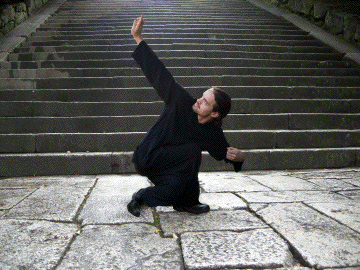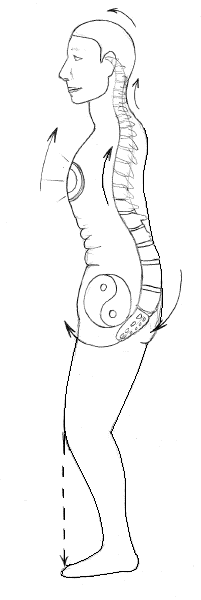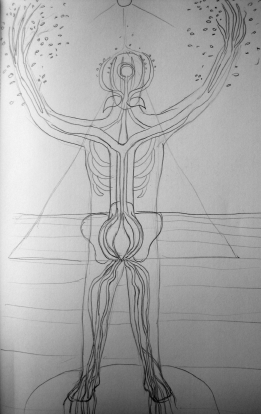
QI GONG EXERCISES:
WHAT ARE QI GONG EXERCISES GOOD FOR?
Qigong exercises can be practiced by anyone at any age or physical fitness. Qigong and Tai chi instructor Alex Tuggle L.Ac. guides students in his classes to help train the mind and body to build energy, focus, and self healing. Placerville Qigong exercises and Taichi movements are ancient and powerful martial art that studies and mimics the forces of nature, such as the "Crane style", "Dragon Style", Tiger, Turtle, Mountain, Trees, and many other forces found in nature are cultivated through Qigong and Taichi practice.
Qigong and Tai Chi exercises are uniquely designed for unlocking emotional energy and stuck Qi in your meridians for treating tight muscles, neck stiffness, fatigue, mental apathy, poor digestion, Liver detoxification, Cancer prevention and treatment, insomnia, anxiety, addictions and emotional blockages. The Qigong healing path helps to unite your Mind and body to allow wellness to permeate every cell in your being into a united whole!
Placerville Qigong exercise are open to all levels of fitness and Qigong experience. I allow my students to find their own unique experience with their own Qi, and allow it to blossom freely through movement, meditation, and breath work.
PLEASE SCROLL DOWN BELOW FOR LINKS TO PAGES WITH SPECIFIC EXERCISES:
Qi Gong Exercises:
Illustrations and Fundamentals
Qi Gong exercises are ancient Chinese exercises, similar to Yoga. Some Qi gong and Yoga exercises are identical due to the many similarities between Ancient Chinese and Indian medicine and philosophy.
There are many different styles of Qi Gong, just like there are many different styles of Yoga. Certain Qi gong exercises contain powerful healing movements that can help treat back pain. All Qi Gong exercises have certain fundamentals which serve as the foundation of a proper Qi gong practice. These include:
1. Stance and Posture: Wuji stance. Wuji is a Chinese word which translates to 'The Void'. When we stand in Wuji stance:

|
- Feet are shoulder width apart with toes pointing forward.
- Knees are slightly bent so that the front edge of your knees are directly above the ends of your toes.
- Tilt your pelvis forward engaging the abdominal and gluteal muscles, pulling your hips and sacrum towards your front.
- Arch your upper back to tilt your chest upwards.
- Curve your neck back but tuck your chin down to keep the Blood and Qi circulation into our brain unobstructed.
- Place your tongue at the roof of your mouth in order to connect the Ren and Du meridians, activating the micro-cosmic orbit.
Having correct posture alone is enough to help heal and relieve much of your back pain, lower back pain, neck pain, hip pain or shoulder pain.
Without proper alignment and posture, you will continue to experience back, hip and neck problems, no matter how effective the Qi gong exercises for back pain are.
2. Breathing: Since our tongue is placed at the roof of our mouth, we must breathe through our nose, long, deep and slow breaths. Qi Gong stresses the importance of 'Abdominal Breathing' which is where you breathe deep into the lower abdomen, forcing the diaphragm muscles to really engage to allow a complete respiration. The lower belly should expand with every inhale and contract with every exhale. This might change with different styles of Qi Gong exercises, but otherwise this is the proper way to breathe.
3. Root: Our stance should be firmly rooted into the earth. This means that our alignment should allow all of our body's weight to flow down through the legs into the ground. You should feel as though a force is pulling up at the very top of your head (Crown chakra, Bai Hui) as well as a weight is pulling down at the very bottom point of your spine. You should feel sturdy like a tree. You must grow your roots deep into the ground so that nothing can knock you over.
4. Breath-Movement: All of your movements should be slow and coordinated with your breath cycle. That means that while you perform one single movement, you should inhale the whole way through, and then exhale as you perform the following movement. This is more advanced and is usually taught after the choreography of the Qi gong exercise has been learned.
5. Beginning and Ending: Always start your Qi Gong exercises with
"Warm ups" to loosen the muscles and tendons and get the Blood and Qi circulation flowing. Always end with a 'Standing meditation' also called 'Return of Qi' to collect your energy back to your 'Lower Dan Tian'. Your Kidney Qi.
Follow these following links for specific movements and visualizations for specific conditions:
- Qigong Warmups
- Meditation to Unite Heaven and Earth
- Qigong Exercises for Back Pain
- Qigong Exercises for Neck Pain Relief
- Qigong Exercises for Shoulder Pain Relief
- Qigong Meditation for Digestion and Insomnia
- Stress Relief Exercise
Finding your Roots & Nourishing your Jing

Qigong Philosophy
As illustrated in the picture above, we are built much like a tree. Our legs and feet are our roots which provide the nourishing Yin Water energy to the rest of our body. Our roots attach to our pelvis and hips which is like the center of our being. It is like the bulb of a lily or an onion.
The onion bulb symbolizes the center-most portion of our being (our hips and pelvis) with roots flowing down providing nourishment(our legs and feet) and the stalk or trunk of our tree growing upwards (symbolizing our spine, upper abdomen and chest).
Our arms and hands are like the branches of our tree body. Our hands are like the leaves of the tree. They can receive energy and also give energy, just like leaves take in carbon dioxide and moisture and release oxygen and moisture.
Our head and mind is like the flower of our being. It is the uppermost expression of our life potential. We are capable of accepting Love and intelligence from the Sun and birds or insects that come to exchange energy with us.
This symbolizes our ability to socialize with other people in a mutually beneficial way as well as our ability to accept heavenly intelligence or intuition through our Third Eye and Crown Chakra points. These points on our forehead and the top-most point of our scalp correspond to highest tip of our spine, where it connects to our brain and pituitary gland and pineal gland. The intelligent governors of our body that oversee all proper coordination of our living body.
Home | Contact | Acupuncture | Disclaimer | Hair Anlysis | About | Nutrition